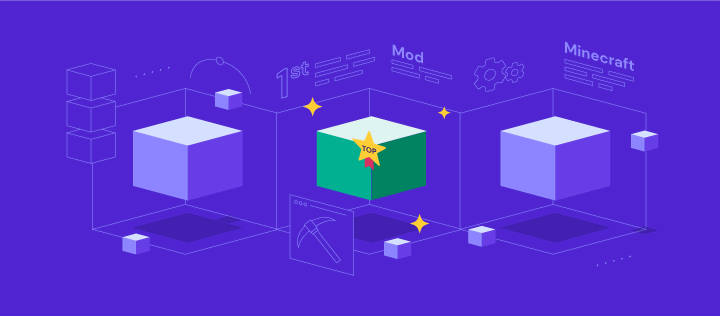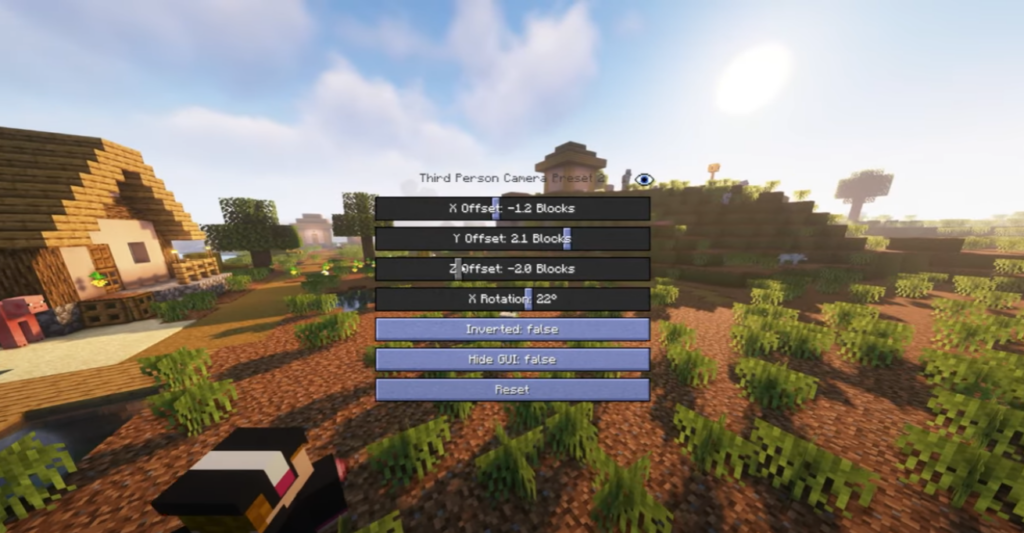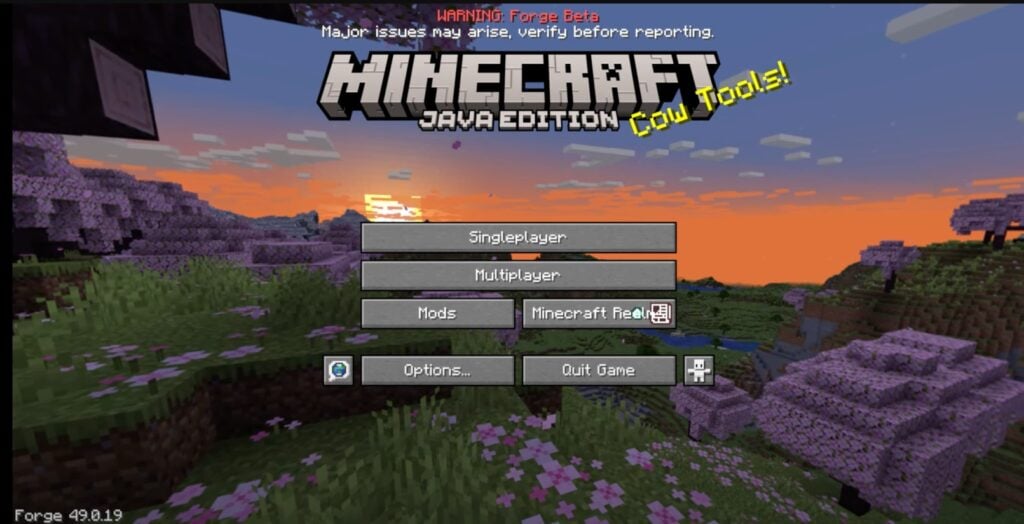Fabric vs Forge: Which modding API is best for your Minecraft server?

Choosing the right Minecraft modding platform for your server is an important decision – it will affect your server’s stability, performance, and which mods you can use. Fabric and Forge are the two most popular options, each with their own advantages.
Fabric is lightweight and faster, while Forge supports larger, more complex mods, making it ideal for extensive gameplay changes.
In this article, we’ll compare Fabric and Forge. We’ll look at their features, performance, and mod compatibility so you can decide which modding API works best for your Minecraft server.
Overview of Fabric vs Forge
Both Fabric and Forge allow you to install Minecraft mods that change how Minecraft works, from adding new features and optimizations to overhauling core mechanics. Using these platforms, server admins can easily enhance gameplay and tailor the experience to their preferences.
While having the right modding platform is essential, you’ll also want to pair it with a reliable Virtual Private Server (VPS) host for optimal uptime and a smooth server connection.
Hostinger’s Minecraft hosting plans come with our own Game Panel for a near-instant setup and a hassle-free management experience. Plus, you’ll get DDoS protection, the ability to scale as your playerbase grows, and 24/7 customer support.
Now, let’s take a look at each platform to explore their differences.

What is Fabric?

(Source)
Fabric is a modern and lightweight modding API and mod loader, which means that mods that run on it are faster to create and update. This is particularly useful when testing mods and features with Minecraft snapshots, helping mod authors adapt to the latest changes and features almost immediately.
As a server owner, this means that you’ll be able to get your mods up to speed rather quickly whenever a new update rolls out. It’s worth noting that Fabric is primarily available for newer versions of Minecraft – 1.14 and above.
The main goal of Fabric is efficiency and speed. It keeps things lightweight, which helps your game run smoothly and reduces the likelihood of supported mod conflicts. Plus, it makes only minimal changes to the core game by itself, so you’ll have a more stable server when running smaller modpacks.
Since it doesn’t come with any built-in features apart from the essentials, Fabric is highly modular. It includes the Fabric loader itself, which helps manage mods, and the Fabric API, a core library that provides the tools necessary to run mods created with it.
Fabric isn’t tied down by extra components such as unnecessary built-in features or bundled mods, either. This modular approach reduces potential incompatibilities and errors that can impact server performance.
Another advantage is that server admins can easily integrate server-side mods. This lets you run mods like WorldEdit and Lithium without your guests having to download them.
Fabric’s lightweight design minimizes resource consumption and streamlines the setup process, making it easy to get your Minecraft modding setup running quickly.
To install Fabric on a Minecraft server, all you need is the official installer and knowledge of which Minecraft version you’re running. If you plan to use any Fabric-specific mods, you’ll also need the Fabric API.
What is Forge?

(Source)
Forge is a more established and heavyweight Minecraft mod loader. It’s been around for about 13 years and supports almost every game version – it’s even led to a new project, NeoForge, which expands on Forge’s foundation.
One of its biggest strengths is its support for large-scale mods and modpacks that can completely overhaul gameplay. This, along with an extensive mod library, makes it a go-to choice for modders who want to make big changes to Minecraft.
Its massive library of Minecraft mods includes many large modpacks because it can handle heavy, resource-intensive mods. However, Forge typically doesn’t update as quickly as Fabric when Minecraft releases new versions. This slower pace can lead to temporary bugs or compatibility issues with newer mods.
Forge also has an active community full of resources and forums where you can find help troubleshooting or making adjustments to mods. This community support and the extensive guides available make it a solid choice for anyone looking to set up a stable, mod-heavy server for the long haul.
Installing Forge is generally straightforward, and the official Forge site includes plenty of resources and setup tutorials. Despite being a larger mod loader compared to Fabric, Forge’s installation process is still user-friendly.
Comparison of Fabric vs Forge
Now that we’ve examined the individual features of Fabric and Forge, let’s compare them directly.
| Feature | Fabric | Forge |
| Performance | Lightweight, less resource-intensive, and built with performance in mind | More resource-heavy, especially with large modpacks and mods that alter core game mechanics |
| Mod compatibility | Limited but growing mod library, especially for client-side modsNot many large-scale mods compared to Forge, but the gap is closing | Extensive mod library, especially for large and complex mods that overhaul the game |
| Usage | Easy to use and install, ideal for servers running a few small mods | More complex to set up but supports large modpacks and custom game mechanics |
| Updates | Rapid updates, especially during new Minecraft releases and snapshots | Slower to update, especially with major Minecraft version changes |
| Support and community | Smaller community with active developers, forums, GitHub repos, and Discord channels; resources are more limited compared to Forge | Larger and well-established community with extensive documentation, tutorials, and support |
| Customization | Great for smaller modifications or performance-focused servers | Best for large, complex servers with lots of features and gameplay changes |
Which one should you choose?
Choosing between Fabric and Forge when setting up a Minecraft server can be tricky, but knowing what each platform offers can clarify your options.
Fabric is best for smaller servers that want to run a few well-optimized mods. It excels in performance and speed. Its lightweight design allows for quick updates, making it easy for server admins and mod developers to transition to new Minecraft versions.
While it can also handle larger mods, Fabric is best if you want to create a smaller, performance-focused server or experiment with newer mods.
Forge, on the other hand, is a go-to choice for those looking to run large modpacks. It offers a solid framework for extensive modding and supports a large library of popular Minecraft mods. The downside is that it can be resource-intensive and doesn’t update as quickly.
Conclusion
Choosing between Fabric and Forge depends on what you want for your server. Go with Fabric for a streamlined experience, quick setup, and efficient performance. On the other hand, Forge is a great choice for a mod-heavy server with extensive customization.
Fabric vs Forge FAQ
What is the main difference between Fabric and Forge for Minecraft?
The main differences between Fabric and Forge are performance and customization.
Fabric is lightweight and a better option for performance-focused, smaller servers. It’s also quick to update whenever Minecraft releases a new version. Forge is more resource-intensive but better suited for large Minecraft modpacks. It also supports a wider range of compatible mods.
Can I run both Fabric and Forge mods on the same server?
You can’t run Fabric and Forge mods on the same server directly because they use different modding frameworks. Some tools, like the Sinytra Connector, do allow you to run Fabric mods on Forge, though.
Which mod loader is better for larger modpacks?
While Fabric does support large modpacks, Forge is ultimately the better choice. It supports an extensive collection of mods that overhaul Minecraft’s gameplay. Forge also has the benefit of a larger developer community, as well as the support for older game versions for more compatibility.
